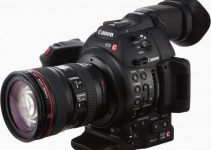The 80’s nostalgia vibe is going big, trough photos, tv shows, it’s having a huge comeback in pop culture. Filmmaking world is not immune to this trend, so being able to recreate that 8mm vintage film look is a handy tool to have up your sleeve. It could be it a flashback for your short or just a cool segment in a wedding video, and why not, a client’s video may call for an old-times feeling.
We all know very well that kind of homemade and emotional look, but in a world of super sharp 8k cameras and HDR widescreen monitors how to you get it? Whatever should be the case you need the look for, Peter McKinnon show us the basic guidelines to nail that warm and nostalgic 8mm feel.
First thing first. To get that look you should start from the camera itself. Going into the picture profile you need to take down sharpness and saturation. Each camera manufacturer will have a different menu, but our aim is to kill the sharpness of our modern camera.
That is our first step, but we’re far from done here. To sell a vintage look we have to recreate the look in all those small details that were common at the time, camera movements, framing, and even sounds. It’ a sum of small elements that gives away the feeling, not a single step.
Let’s talk of depth of field or as we call it DOF. 8mm is a very small area compared to modern sensors. This small area implied that quite everything in the image used to be in focus.
How can we achieve that? Forget your super fast f1.4 aperture and your beautiful bokeh, you need to go with an image where everything is in focus just as it was in those cameras, and that means stopping down the iris: To f8 and beyond!
Forget widescreen, forget your cinematic 2.35:1 or your 16:9. The screen ratio of the past was the squarish and narrow 4:3. But our cameras do not shoot that way, so what shall we do?
A simple crop in your editor or a mask on the side of the frame will make do, but at the same time, that means that shooting with a modern camera you should pay a little bit of attention, framing in the middle the action or the talent. It may help to have a small tape on your monitor to assist in framing.
If you close your eyes and think of the birthday party videos we used to have what comes to mind? The slow and unstable zooming toward the cake right? Leave at home your gimbal at home together with your slider, add little imperfections in the mix, a shaky movement, a bumping zoom will be the frosting on the top.
Ok, so once you’ve shot the images, let’s give a finishing touch in your editor of choice. One important advice is to search for a film grain overlay, an image of random filmic dust moving that you can put on top of your footage and blend on the image giving a little rusty and old look.
You can enhance with a little bit of video noise, or maybe lower sharpness or play with saturation and vibrance. Don’t forget some film roll sound and there you will have it, your vintage looking film!
[source: Peter McKinnon]
Disclaimer: As an Amazon Associate partner and participant in B&H and Adorama Affiliate programmes, we earn a small comission from each purchase made through the affiliate links listed above at no additional cost to you.
Claim your copy of DAVINCI RESOLVE - SIMPLIFIED COURSE with 50% off! Get Instant Access!




